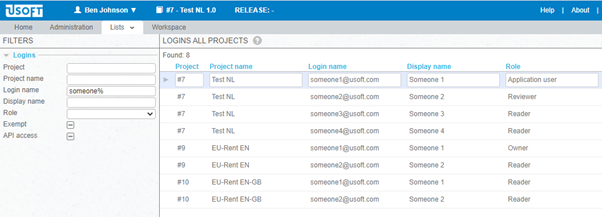Where is URequire?
As of version 3.5, URequire has been renamed to USoft Studio. This new name communicates that the tool helps you with business modelling in a wider sense, not just with requirements gathering for software releases.
REST API
In the past, USoft Studio (then: URequire) only offered web pages for human access. Now, you can have software approach USoft Studio through a REST API. Here is a REST call that retrieves the names of all the nouns you have defined in a project:
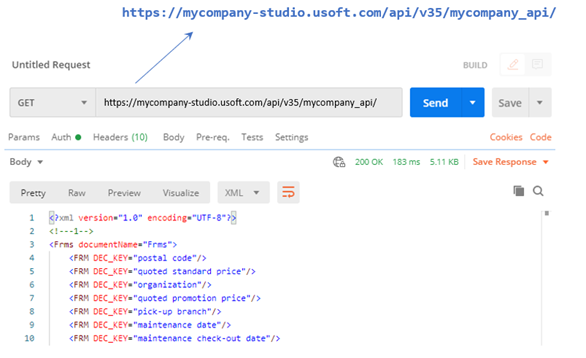
Use the REST API for anything from post-production and reporting, data analysis, logging and security backups, to publishing or populating pages on your Intranet sites.
The USoft Studio 3.5 API is read-only. A full overview of what the API offers is published inside the USoft Studio product. Click the REST API document on the "Other" tab of the Help tile in USoft Studio's "Home" page.
The REST API is a separate product. Regular USoft Studio licenses offer access to web pages only. For details on how to buy the REST API, please contact USoft Sales or USoft Support.
Identity provisioning
When you go to USoft Studio 3.5, you are invited to sign in on a new login page. This page is separate from the USoft Studio application itself. If sign-in is successful, you are automatically directed to USoft Studio and you no longer need to provide a password there.
In your browser's address bar, the URL you typed to go to USoft Studio is replaced by a URL starting with idp... . This indicates that your sign-in is handled not by USoft but by an independent identity provider.
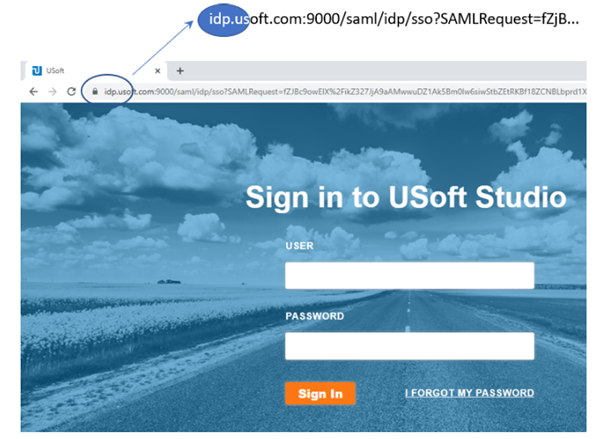
In the past, you had to provide your password every time you went to USoft Studio (then: URequire). Now, you can achieve single sign-on (SSO) for your users across USoft Studio and other software. Identity provisioning also opens the door to more advanced authentication strategies, including SCIM. To set up SSO or SCIM, please contact your USoft representative or USoft Support.
SBVR Concept Diagrams
It is now possible to produce "SBVR concept diagrams" in USoft Studio.
This allows you to draw a map that shows the terms of your vocabulary: your (green) noun concepts and (blue) verb concepts and, especially, the ways in which they are interconnected. As with all Studio diagrams, all the terms you use in the diagram are automatically connected to formulations that use the clicked concept:
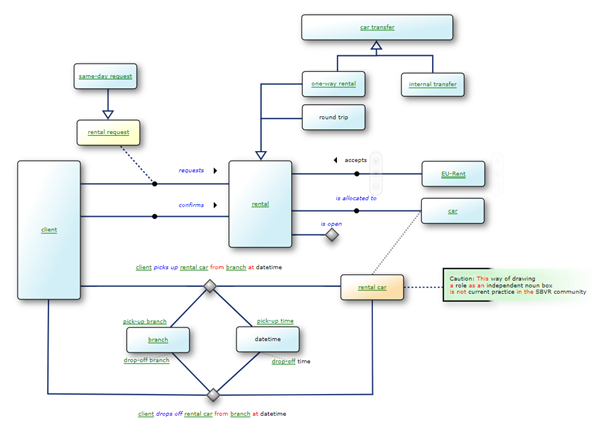
"SBVR diagrams" are not unlike the Entity/Attribute/Relationship (EAR) diagrams that you could already draw in URequire. But EAR expresses relational database design. SBVR diagrams are tailored for visualisation of the concept structure of your vocabulary.
This diagram type uses a subset of UML diagram elements, as suggested by the Object Management Group (OMG) for the visualisation of SBVR specifications. The OMG uses this particular subset to visualise its own SBVR specification. The diagram type has informative, i.e, non-normative status in SBVR.
We have implemented USoft-specific extras in this new diagram type. For details and how-to instructions, click the SBVR link in the Diagrams tab page on the Help tile in USoft Studio's "Home" screen.
Licensing Overviews
Previously, in USoft Studio (then: URequire), if you ran multiple projects, it was difficult to get an overview of who had access to which projects, and who was in the group of people occupying a product license slot.
Now, owners of projects are allowed queryable, cross-site overviews of license holders across all projects - even projects that the owner is not allowed otherwise to access.
To see the new license overviews, log on as owner, press the Administration (Du: Beheer) button, then choose Lists, License Use from the menu. You can use filters to get partial views:
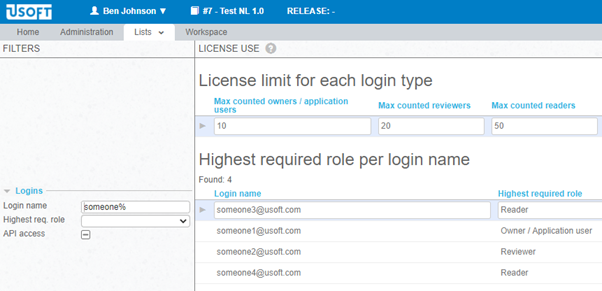
Or choose Lists, Logins All Projects to get a spreadsheet showing all the team members and their projects and roles across the entire site:
